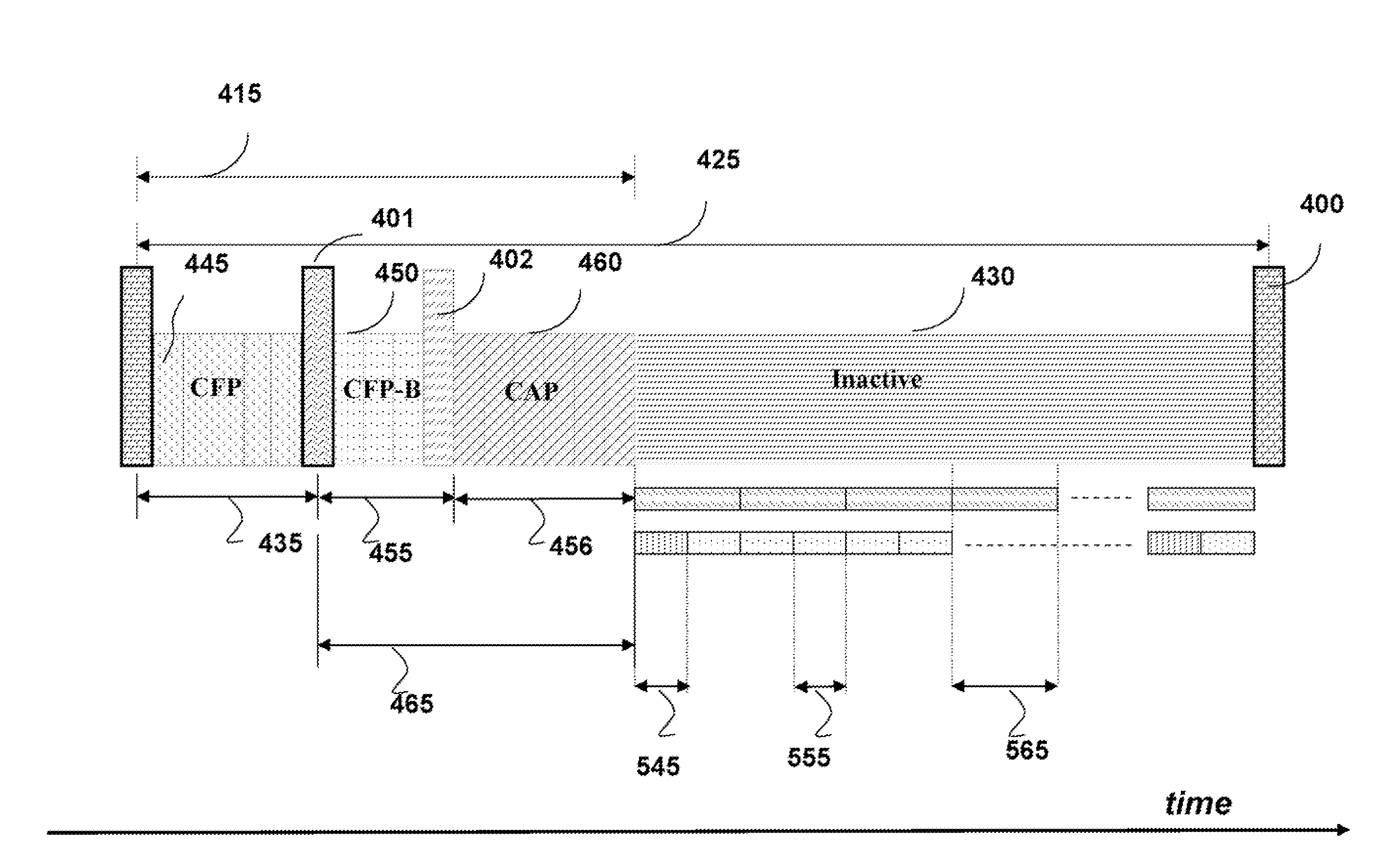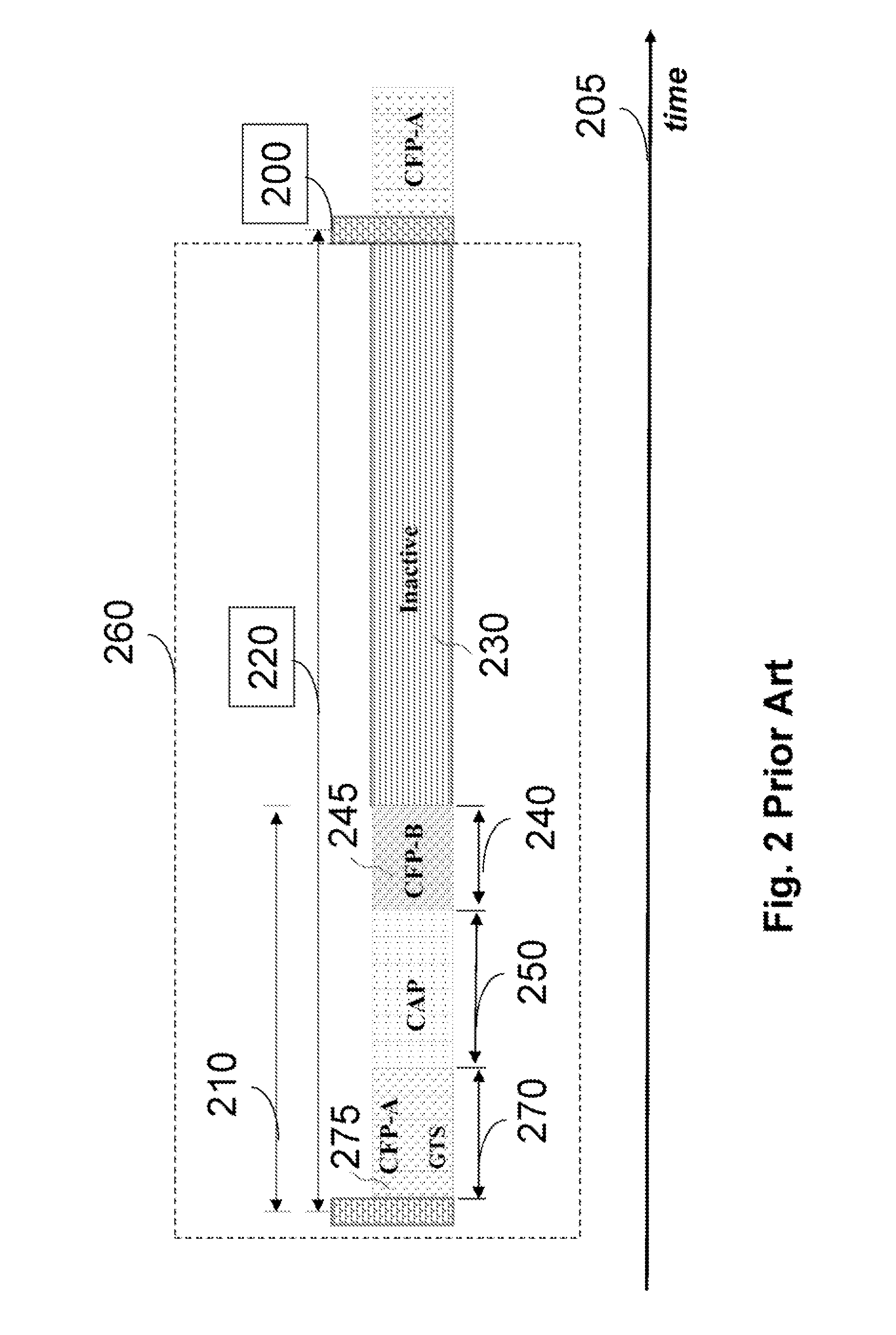Hybrid Multiple Access Method and System in Wireless Networks
a wireless network and multiple access technology, applied in the field of wireless communications, can solve the problems of increasing network latency, cfp transmission failure, and increasing latency for the more important on-demand traffi
- Summary
- Abstract
- Description
- Claims
- Application Information
AI Technical Summary
Problems solved by technology
Method used
Image
Examples
Embodiment Construction
[0032]As shown in FIG. 1, a network used by the embodiments of invention can be a cluster-tree of nodes (transceiver devices) 101, with a single personal area network (PAN) coordinator 102, parent cluster coordinators 103, child coordinators 104, and leaf nodes 105.
Frame Structure
[0033]FIG. 4B shows a structure of a superframe 470 according to an embodiment of the present invention along a time line 405. The superframe according to the embodiment of the invention reduces power, improves reliability, and supports low latency applications. A hybrid MAC method is also described.
[0034]The superframe is synchronized by beacons 400 during a beacon interval 425. Every coordinator node periodically transmits the beacon. The superframe has an active interval 415 and an inactive interval 430. In one embodiment, all the beacons are transmitted at the same channel frequency. In another embodiment, the beacons use frequency hopping (FH).
[0035]It should be noted that the time is not to scale in t...
PUM
 Login to View More
Login to View More Abstract
Description
Claims
Application Information
 Login to View More
Login to View More - R&D
- Intellectual Property
- Life Sciences
- Materials
- Tech Scout
- Unparalleled Data Quality
- Higher Quality Content
- 60% Fewer Hallucinations
Browse by: Latest US Patents, China's latest patents, Technical Efficacy Thesaurus, Application Domain, Technology Topic, Popular Technical Reports.
© 2025 PatSnap. All rights reserved.Legal|Privacy policy|Modern Slavery Act Transparency Statement|Sitemap|About US| Contact US: help@patsnap.com



